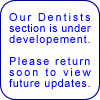| How
does ozone work?
Ozone works by inactivating bacteria, viruses and fungi.
Ozone also assists the process of re-mineralisation.
- Ozone will attack bacteria and viruses that have
no enzyme coating, as well as targeting diseased human
cells (with deficient cell wall enzymes and/or disrupted
DNA or RNA strands
- Ozone kills the micro organisms that cause an acidic
pH in the mouth which impedes re-mineralisation. This
allows the oral pH levels to return to normal, thus
allowing natural re-mineralisation by calcium, fluoride,
phosphates etc. to occur
- Proteins (Amino Acids) strongly adhere to all exposed
dental surfaces. Here they also impede re-mineralisation.
Ozone “cleaves” or breaks down the chains
that bind Amino Acids together, thus dislodging them
from their niche environment. Re-mineralisation can
thus occur more easily.
(Is this the mechanism that can is responsible for
the pain relief associated after using Ozone on “Cracked
Tooth syndrome” & “Sensitive cementum”
etc.)
- Waste products of micro organisms include Pyruvic
Acid, which provides a niche environment for “acidogenic”
& “acidoduric” organisms. Ozone oxidises
the Pyruvic Acid, turning it into neutral Acetate
& CO2. Non-parasitic bacteria may then colonise
the lesion, without undue concern – the patient
has bought some more time to alter their diet and/or
oral hygiene regimen
 |
|




